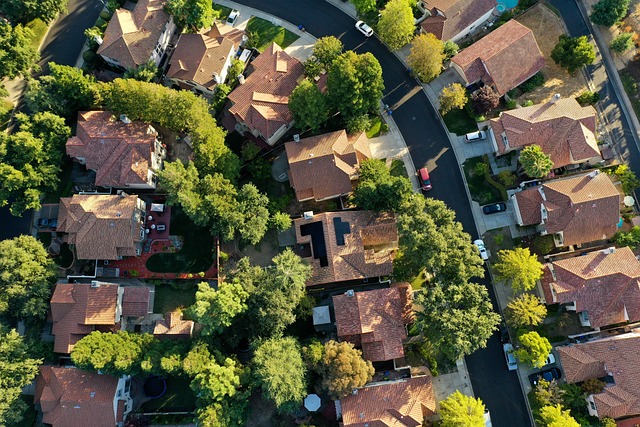Sustainable living practices are essential for creating a healthier planet and a more equitable society. As environmental concerns and resource depletion become increasingly urgent, individuals and communities are turning to sustainable practices to reduce their ecological footprint and promote a more sustainable future. This article explores the principles of sustainable living, practical tips for adopting eco-friendly habits, the benefits of sustainable living, and the role of technology and innovation in supporting sustainability.
Understanding Sustainable Living
Sustainable living refers to making choices and adopting practices that minimize environmental impact, conserve resources, and promote the well-being of current and future generations. It encompasses various aspects of daily life, including energy use, waste management, transportation, food choices, and consumer behavior. The goal of sustainable living is to create a balance between meeting our needs and preserving the planet’s natural resources.

Key Principles of Sustainable Living:
- Reduce, Reuse, Recycle: Minimize waste by reducing consumption, reusing items, and recycling materials.
- Conserve Resources: Use resources efficiently and conserve energy, water, and raw materials.
- Support Renewable Energy: Opt for renewable energy sources such as solar, wind, and hydro power.
- Sustainable Transportation: Choose eco-friendly transportation options and reduce reliance on fossil fuels.
- Sustainable Agriculture: Support sustainable and organic farming practices and reduce meat consumption.
Practical Tips for Sustainable Living
- Energy Efficiency:
- Upgrade to Energy-Efficient Appliances: Replace old appliances with energy-efficient models that use less electricity and reduce your energy bills.
- Use LED Lighting: Switch to LED light bulbs, which consume less energy and last longer than traditional incandescent bulbs.
- Insulate Your Home: Improve insulation to reduce heating and cooling costs and minimize energy consumption.
- Water Conservation:
- Fix Leaks: Repair any leaks in faucets, toilets, or pipes to prevent water wastage.
- Install Low-Flow Fixtures: Use low-flow showerheads and faucets to reduce water usage.
- Collect Rainwater: Set up rain barrels to collect rainwater for watering plants and gardens.
- Waste Reduction:
- Adopt a Zero-Waste Lifestyle: Reduce single-use plastics and opt for reusable alternatives, such as cloth bags, bottles, and containers.
- Compost Organic Waste: Start a composting system for food scraps and yard waste to reduce landfill waste and enrich soil.
- Purchase in Bulk: Buy products in bulk to reduce packaging waste and save money.
- Sustainable Transportation:
- Use Public Transportation: Take advantage of public transit options to reduce your carbon footprint.
- Bike or Walk: Choose biking or walking for short trips to reduce emissions and improve personal health.
- Carpool or Share Rides: Share rides with others to minimize the number of vehicles on the road and reduce greenhouse gas emissions.
- Eco-Friendly Food Choices:
- Eat Local and Seasonal: Purchase locally grown and seasonal produce to reduce the carbon footprint associated with transportation and support local farmers.
- Reduce Meat Consumption: Incorporate more plant-based meals into your diet to decrease the environmental impact of meat production.
- Grow Your Own Food: Start a home garden to grow your own vegetables, herbs, and fruits.
- Sustainable Consumer Behavior:
- Buy Quality Over Quantity: Invest in high-quality, durable products that last longer and reduce the need for frequent replacements.
- Support Ethical Brands: Choose products from companies that prioritize sustainability, fair labor practices, and environmentally friendly production methods.
- Practice Minimalism: Simplify your life by decluttering and focusing on essential items, reducing overall consumption.

Benefits of Sustainable Living
- Environmental Protection:
- Reduced Pollution: Sustainable practices help reduce air and water pollution, contributing to cleaner and healthier ecosystems.
- Conservation of Resources: By conserving natural resources and using renewable energy, we can help preserve the environment for future generations.
- Economic Savings:
- Lower Utility Bills: Energy and water-efficient practices lead to cost savings on utility bills and reduce overall expenses.
- Long-Term Investment: Investing in sustainable products and technologies can lead to long-term savings and increased property value.
- Health and Well-Being:
- Improved Air Quality: Reducing pollution and chemical exposure contributes to better respiratory health and overall well-being.
- Healthy Lifestyle: Sustainable living practices, such as eating organic foods and being physically active, promote a healthier lifestyle.
- Community and Social Impact:
- Stronger Communities: Supporting local businesses and farmers fosters a sense of community and strengthens local economies.
- Social Responsibility: Sustainable living promotes ethical practices and social responsibility, contributing to a more equitable society.
The Role of Technology and Innovation in Sustainable Living
- Smart Home Technology:
- Energy Management Systems: Smart home systems monitor and control energy usage, optimizing heating, cooling, and lighting for efficiency.
- Water Monitoring Devices: Smart devices track water consumption and detect leaks, helping homeowners conserve water.
- Renewable Energy Innovations:
- Solar Panels: Advances in solar technology have made solar panels more efficient and affordable, enabling more households to generate their own renewable energy.
- Wind Turbines: Small-scale wind turbines are becoming more accessible for residential use, providing an additional source of clean energy.

- Sustainable Agriculture Technology:
- Precision Farming: Technology such as drones and sensors helps farmers optimize water usage, reduce chemical inputs, and increase crop yields.
- Vertical Farming: Vertical farming systems use less land and water while producing food in urban environments, reducing the need for transportation.
- Circular Economy Solutions:
- Recycling and Upcycling: Innovative recycling and upcycling technologies transform waste materials into new products, reducing landfill waste and resource consumption.
- Product-as-a-Service Models: Companies are adopting models where products are rented or leased rather than purchased, promoting reuse and reducing waste.
Challenges of Sustainable Living
- Cost of Implementation:
- Initial Investment: Some sustainable practices and technologies may require a higher initial investment, which can be a barrier for individuals and businesses.
- Economic Disparities: Access to sustainable products and technologies may vary based on economic and geographic factors, limiting widespread adoption.
- Behavioral Change:
- Resistance to Change: Adopting new habits and practices can be challenging, and some individuals may resist changing their lifestyle.
- Lack of Awareness: Limited awareness and understanding of sustainable living practices can hinder efforts to promote eco-friendly behavior.
- Infrastructure and Accessibility:
- Limited Availability: Access to sustainable products and services may be limited in certain regions, affecting the ability to adopt eco-friendly practices.
- Infrastructure Gaps: The lack of infrastructure, such as recycling facilities or public transportation options, can impact the effectiveness of sustainability efforts.
The Future of Sustainable Living
- Increased Adoption of Green Technologies:
- Widespread Use: As technology advances and becomes more affordable, the adoption of green technologies and sustainable practices will likely increase.
- Innovative Solutions: Continued innovation in renewable energy, waste management, and resource conservation will drive further progress in sustainable living.
- Integration of Sustainability into Daily Life:
- Mainstream Practices: Sustainable living practices will become more integrated into everyday life, with a greater emphasis on eco-friendly choices and habits.
- Education and Awareness: Increased education and awareness campaigns will promote the benefits of sustainable living and encourage widespread adoption.
- Collaborative Efforts:
- Community Initiatives: Collaborative efforts at the community level, including local sustainability programs and initiatives, will play a crucial role in driving positive change.
- Global Partnerships: International partnerships and agreements will support global sustainability goals and address pressing environmental challenges.
- Policy and Regulation:
- Supportive Policies: Governments and policymakers will implement supportive policies and regulations to encourage sustainable practices and address environmental issues.
- Incentives: Financial incentives and subsidies for sustainable technologies and practices will further drive adoption and innovation.
Conclusion
Sustainable living practices are essential for creating a healthier planet and a more equitable society. By adopting eco-friendly habits, supporting renewable technologies, and making conscious choices, individuals and communities can reduce their environmental impact and contribute to a more sustainable future. While challenges exist, the benefits of sustainable living are profound, including environmental protection, economic savings, and improved health and well-being. As technology and innovation continue to advance, the journey toward sustainable living will become increasingly accessible, empowering us all to embrace a greener future.

